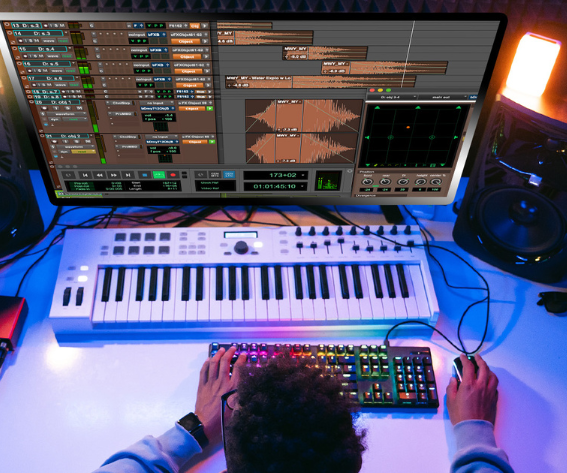In a recent study, it was discovered that around 80% of brand audiences now prefer live video over pre-recorded video. Across social media, live streams have been gaining in popularity, with live videos estimated to hold users’ attention 10x to 20x longer than pre-recorded, on-demand content. But why is this the case and how does live video production really differ from recorded production?
The Buzz Behind Live Video
Before looking into why live videos have grown in popularity over the last few years, it’s first important to note that this spreads across a range of industries. In the iGaming industry, for instance, there has been a seismic shift toward live dealer games over standard system slots.
And this is with bonuses to think of too. To give an example, the BitStarz bonus code offers 205 free spins, with all games apart from slots only contributing 5% to the wagering requirements. And yet players are picking these bonuses and still flocking toward the live features.
This is important when considering the live video shift as a whole – perhaps it’s not so much about urgency, as it is about authenticity. As the world gets more digitized and, subsequently, less personal, authenticity has become a powerful driver in offering audiences an experience that feels more personal and engaging.
That’s probably the key reason why live video and pre-recorded videos differ in terms of engagement, and in terms of production, the differences just keep on growing.
The Execution of Authenticity
So authenticity is what audiences love in 2024, but that comes at a price. Because live video is broadcast as it happens, there is no room for post-production adjustments, which means the planning must be a lot more intricate.
Recorded production still involves planning, of course, but mistakes during recording can be corrected on the spot, or during post-production, which is a luxury live videos do not have. This gives pre-recorded content more flexibility to refine, re-shoot, or adjust the final product, while mistakes during a live video will be immediately visible to the audience.
Interacting With the Audience
The interaction with the audience is going to be different too. As mentioned before, audiences like the feeling of authenticity that live videos offer, not only because it feels more real, but because it can involve them. Some of the most popular real-time videos look to interact with the audience, whether that’s through live chat, Q&As, polls, or other means of interaction.
The immediate audience feedback can also influence the direction of the event itself, building more excitement surrounding its immediacy and unpredictability. There is no such interaction during pre-recorded production. Audience feedback comes after the release of the video, not during, and therefore, the content feels more polished and cinematic, lacking the ‘in-the-moment’ excitement of live recording.
The Cost Factor
Another reason why live videos have become popular for creators is because they are often far more cost-effective than pre-recorded production. Of course, significant investment is still required for real-time technology and teams responsible for controlling the broadcast, but overall, the cost associated with pre-recorded content is eliminated.
This is especially true if we’re talking about live podcasts, which have been growing in popularity for filmmakers and audiences alike. For podcasts and live video, there’s no need for extensive post-production editing to make the content as glossy as possible. This means creators can focus their resources on the quality of the stream itself, rather than spending days – or even weeks – refinding the footage.
As well as this, many of the platforms that support live videos, such as YouTube, Twitch, or Instagram, offer integrated tools to help creators monetize their broadcasts through ads, subscriptions, or donations, providing an immediate return on investment while keeping those initial costs low.
The Benefits of Live Video Compared to Pre-Recorded Production
This brings us to the benefits of live video for filmmakers and creators, and why it might be a good idea to push your brand in that direction. For smaller creators with limited budgets, there’s no denying that live video helps to level the playing field.
By using affordable equipment and leveraging platforms with built-in streaming capabilities, even those with the most modest of resources can produce compelling live content that competes with the very best. This accessibility has played a significant role in the widespread adoption of live video across industries, and that should make it a go-to strategy if you’re looking to connect with audiences on a deeper level and do so in a cost-efficient yet impactful way.
That’s not to say pre-recorded production doesn’t have its upsides. It’s still worth noting that pre-recorded production offers a level of polish and precision that live video simply cannot match. It allows for meticulous planning, multiple takes, and extensive editing, ensuring the final product is exactly as envisioned, and it can also be the better choice when it comes to consistency.
After all, the content can often be refined to meet the standards of the brand, with the possibility to be reused across multiple platforms without variation. But overall, the key for creators is finding the right balance and understanding that, through utilizing the strengths of both formats, it’s possible to tailor a video strategy that works for everyone.









Leave a reply